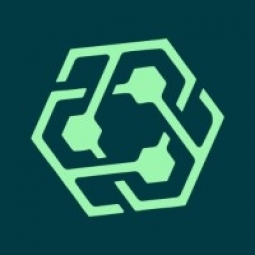公司规模
Large Corporate
地区
- Asia
国家
- Japan
产品
- Hyperledger Fabric
技术栈
- Blockchain
- Smart Contracts
- Data Partitioning
实施规模
- Enterprise-wide Deployment
影响指标
- Digital Expertise
- Innovation Output
技术
- 应用基础设施与中间件 - 区块链
适用行业
- 教育
适用功能
- 人力资源
- 产品研发
用例
- 智能合约
- 监管合规监控
服务
- 软件设计与工程服务
- 系统集成
关于客户
索尼全球教育是索尼公司和索尼计算机科学实验室公司的子公司。该公司成立于 2015 年,其使命是提供一系列统一的非传统服务,激发全世界的学习热情,提供将这种热情付诸行动的机会,并为互联社会创建新的教育基础设施。为了实现这一目标,索尼全球教育将继续推出新的教育体验,激发学习者的好奇心,并将继续积极寻求与其他同样对教育充满热情的人建立合作伙伴关系。
挑战
索尼全球教育认为,需要创建一个更全面、开放和可信的系统来记录日本公民的教育和培训证书。现有系统中的证书分散存放,每个证书都需要不同的验证流程。索尼全球教育设想了一个系统,可以准确记录个人在学术和培训环境中的表现,然后控制对这些记录信息的访问。这将使企业和教育机构更全面地了解候选人的背景,并帮助他们为每个工作机会和项目录取挑选出最合格的人才。
解决方案
索尼全球教育选择了 Hyperledger Fabric(一种区块链框架,也是 Linux 基金会托管的 Hyperledger 项目之一)来构建凭证平台。之所以选择 Hyperledger Fabric,是因为它是一个通用业务平台和开源项目,可以通过链码支持智能合约,并通过渠道支持数据分区。与其他区块链解决方案相比,它还允许更灵活的数据模型和业务逻辑。索尼全球教育使用托管在安全云上的 Hyperledger Fabric 创建了凭证平台的原型。原型帮助评估团队确定该技术确实提供了构建下一代凭证平台所需的所有功能。
运营影响

Case Study missing?
Start adding your own!
Register with your work email and create a new case study profile for your business.
相关案例.

Case Study
IoT platform Enables Safety Solutions for U.S. School Districts
Designed to alert drivers when schoolchildren are present, especially in low-visibility conditions, school-zone flasher signals are typically updated manually at each school. The switching is based on the school calendar and manually changed when an unexpected early dismissal occurs, as in the case of a weather-event altering the normal schedule. The process to reprogram the flashers requires a significant effort by school district personnel to implement due to the large number of warning flashers installed across an entire school district.

Case Study
Revolutionizing Medical Training in India: GSL Smart Lab and the LAP Mentor
The GSL SMART Lab, a collective effort of the GSL College of Medicine and the GSL College of Nursing and Health Science, was facing a challenge in providing superior training to healthcare professionals. As clinical medicine was becoming more focused on patient safety and quality of care, the need for medical simulation to bridge the educational gap between the classroom and the clinical environment was becoming increasingly apparent. Dr. Sandeep Ganni, the director of the GSL SMART Lab, envisioned a world-class surgical and medical training center where physicians and healthcare professionals could learn skills through simulation training. He was looking for different simulators for different specialties to provide both basic and advanced simulation training. For laparoscopic surgery, he was interested in a high fidelity simulator that could provide basic surgical and suturing skills training for international accreditation as well as specific hands-on training in complex laparoscopic procedures for practicing physicians in India.

Case Study
Implementing Robotic Surgery Training Simulator for Enhanced Surgical Proficiency
Fundacio Puigvert, a leading European medical center specializing in Urology, Nephrology, and Andrology, faced a significant challenge in training its surgical residents. The institution recognized the need for a more standardized and comprehensive training curriculum, particularly in the area of robotic surgery. The challenge was underscored by two independent studies showing that less than 5% of residents in Italian and German residency programs could perform major or complex procedures by the end of their residency. The institution sought to establish a virtual reality simulation lab that would include endourological, laparoscopic, and robotic platforms. However, they needed a simulator that could replicate both the hardware and software of the robotic Da Vinci console used in the operating room, without being connected to the actual physical console. They also required a system that could provide both basic and advanced simulation training, and a metrics system to assess the proficiency of the trainees before they performed surgical procedures in the operating theater.

Case Study
Edinburgh Napier University streamlines long-distance learning with Cisco WebEX
• Geographically dispersed campus made in-person meetings costly and inconvenient.• Distance-learning programs in Malaysia, India, and China required dependable, user-friendly online tools to maximize interaction in collaborative workspaces.• Virtual learning environment required a separate sign-in process, resulting in a significant administrative burden for IT staff and limited adoption of collaboration technology.

Case Study
8x increased productivity with VKS
Before VKS, a teacher would spend a lot of time showing a group of 22 students how to build a set of stairs within a semester of 120 hours. Along with not leaving the teacher much time to provide one-on-one support for each student to properly learn carpentry, it also left a considerable amount of room for error. Key information would be misinterpreted or lost as the class was taught in the typical show-and-tell way.

Case Study
Scalable IoT Empowering GreenFlex's Sustainable Growth
GreenFlex, a company that supports sustainable development, decarbonization, and energy efficiency, faced several challenges in its quest to expand its business. The company needed to deploy a robust and sustainable IoT technology to support its growth. It was crucial for them to monitor and control devices at customer sites in a safe and reliable manner. They also needed to integrate devices across a range of communication protocols and gather and act on data to meet efficiency targets. GreenFlex had previously built IoT capabilities into its digital platform, GreenFlexIQ, to monitor and manage customer sites remotely. However, they soon realized that they needed a new platform to support their ambitions. They needed a platform that could scale to connect more devices for production management and make it easier for the operations team to manage devices in the field.



